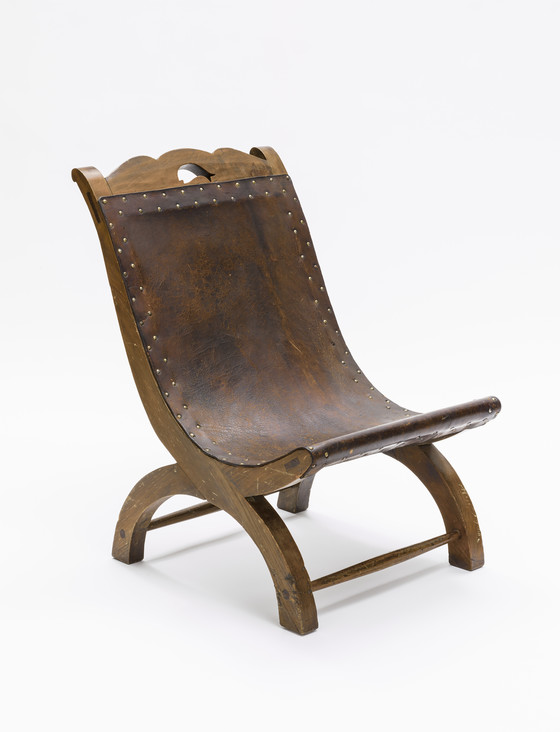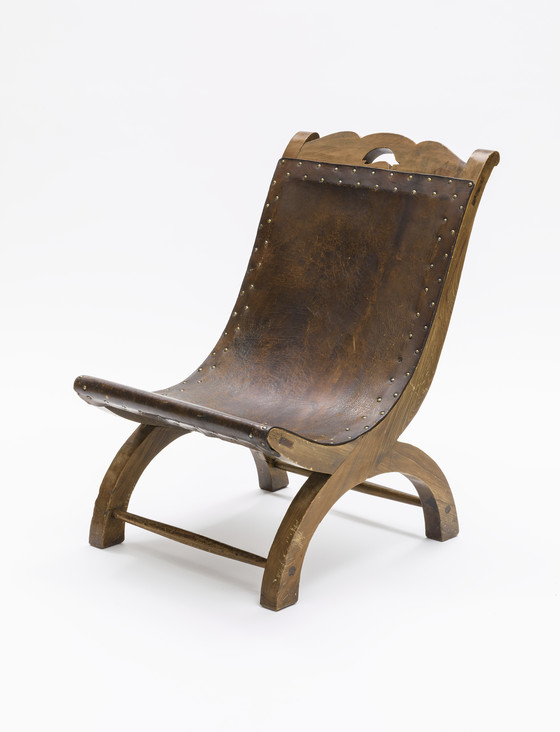William Spratling is one of Mexico’s most famed modern designers. In 1931 he opened a silver workshop and craft studio in Taxco, the Taller de Las Delicias.
...
William Spratling is one of Mexico’s most famed modern designers. In 1931 he opened a silver workshop and craft studio in Taxco, the Taller de Las Delicias. By 1941 Spratling’s works were selling outside of Mexico in the U.S. to places like Neiman-Marcus, Bonwit Teller, and Saks Fifth Avenue. Although Spratling is best known for his jewelry designs, the Taller de Las Delicias also produced an array of tinware, hand-loomed wool rugs and blankets, and wood and leather furniture.
Spratling was one of the first designers to revive the butaca (butaque), a type of ranch-style easy chair with distinctive crossed supports, of which he created several variations. The butaca is a hybrid household object thought to have originated in the Caribbean. Its overall shape and low height probably derive from pre-Columbian ritual seats, while its rigid forms, materials, complex wood joinery, and iron nails, are influenced by Spanish state folding chairs known as sillas de caderas, which arrived in the New World with the early settlers. In Mexico, the butaca became popular in towns of the Yucatan and Veracruz. The chair’s sturdy materials—wood, leather, and brass—were ideal to withstand the harsh coastal environments. In the late eighteenth and early nineteenth centuries, the port of Campeche, in Yucatan, became the most important manufacturing center of the butaca (hence sometimes the chair type is simply referred to as a Campeche chair), many which were exported throughout the Americas.
Aside from Spratling, other modern designers working in Mexico also revisited the popular chair form in the 1930s and 40s, including the Cuban-born Clara Porset (1932–1981), Luis Barragán (1902–1988), Héctor Aguilar (1905–1986), and Don Shoemaker (d. 1990). Spratling’s butaca is made of sabino wood, a Mexican cypress, with a leather sling seat which is held in place by brass tacks that are ornamentally arranged in a zig-zag pattern along the edges. The scalloped top crest rail features a fish cut-out. The reverse of the top crest rail displays Spratling’s hallmark: a burned WS brand alongside the word Taxco.
Ilona Katzew, Curator and Department Head, Latin American Art
More...

